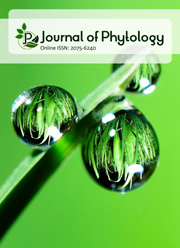Anatomical investigation of three emergent Cyperus species growing naturally on the canal banks of the Nile delta, Egypt
DOI:
https://doi.org/10.25081/jsa.2017.v1.842Keywords:
Sedges, Cyperus, aerenchyma, hydrophytes, anatomy.Abstract
The genus Cyperus is a large genus with about 600 species, widespread all over the world. The present work contains anatomical descriptions of culms and leaves anatomy of three taxa of Cyprus spp. (Cyperus alopecuroides, C. articulates and C. papyrus). Cyperus spp. were collected from canal banks of Nile Delta. The culms in transverse section of all examined species were triangular except for C. articulates which was circular. The ground tissue differentiated into parenchyma cells with thin walls and small, triangular intercellular spaces, while C. articulates has large hollow pith. Vascular bundles are small, angular and scattered throughout the thin-walled ground tissue. Leaf anatomy of C. alopecuroides and C. papyrus is an example of the isobilateral mesophyll with palisade parenchyma on both sides, enlarged epidermal cells referred to as hing cells found in the middle of the blade. The center of the leaf is occupied by a large vascular bundle surrounded by a bundle sheath.



 .
.